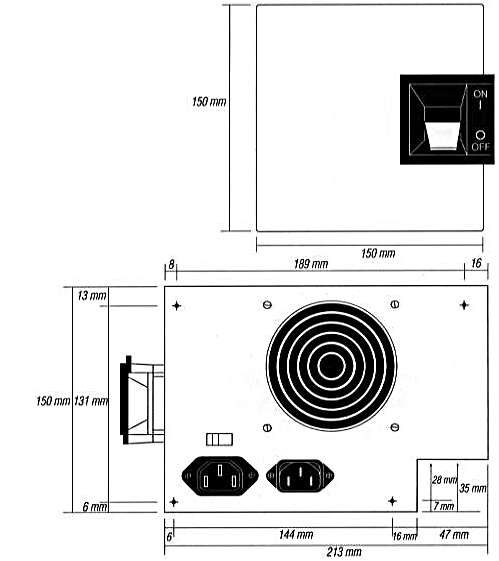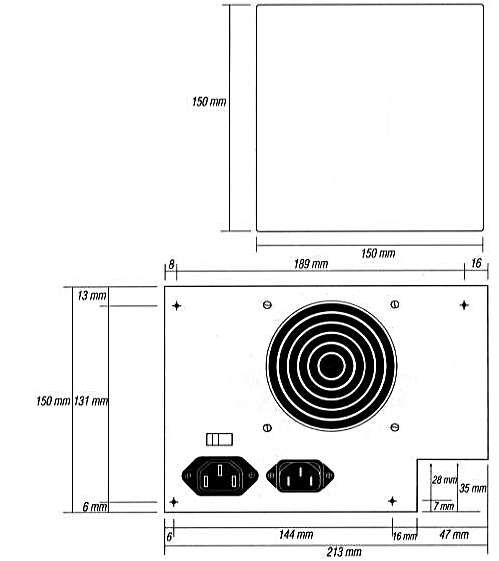[ The PC Guide | Systems and Components Reference Guide | Power | The Power Supply | Power Supply Form Factors ]
AT Form Factor
In 1984 IBM introduced the IBM PC/AT, "AT" standing for "advanced technology", an abbreviation whose use still survives to this day in some contexts. Very similar in overall physical design to the PC and XT models that preceded it, the power supply in these units was increased in size and changed slightly in shape, establishing it as a distinct form factor. Whereas "clone" manufacturers made a few PC/XT units compatible with the IBM PC and XT, it was with the AT that the PC world really began to explode. Many different manufacturers began creating AT-compatible systems and with them, AT form factor power supplies. The original AT power supply provided 192 W--a respectable figure, especially for the time, which represented a tripling of the original PC's power supply output just three years later. It is used in AT form factor cases and with AT or Baby AT form factor motherboards. It has the same motherboard and drive connectors as the PC/XT form factor.
|
Diagram of the side and rear views of an AT desktop
form factor power supply, |
Original image � PC Power & Cooling, Inc. |
The AT form factor was the first to introduce tower-style cases and systems to the PC world. The desktop power supply and tower power supply were internally the same. The only difference was in the on/off switch. The desktop used the same red toggle switch as the PC and XT, while the tower introduced the first remote power switch in the PC world. The control wires for the switch were passed through the same hole in the front of the power supply case that was used for the motherboard and drive connector bundle.
|
Diagram of the side and rear views of an AT tower form
factor power supply, |
Original image � PC Power & Cooling, Inc. |
The AT form factor is now obsolete of course, though many of these systems remain in use. After only a few years, the AT form factor was quickly dethroned by its smaller successor, the Baby AT form factor, due to the advantages of the latter's smaller size, so far fewer AT systems than Baby AT systems are found today.
![]() Next: Baby AT Form Factor
Next: Baby AT Form Factor
| The PC Guide
(http://www.PCGuide.com) Site Version: 2.2.0 - Version Date: April 17, 2001 © Copyright 1997-2004 Charles M. Kozierok. All Rights Reserved. |
Not responsible for any loss resulting from the use of this site. Please read the Site Guide before using this material. |

